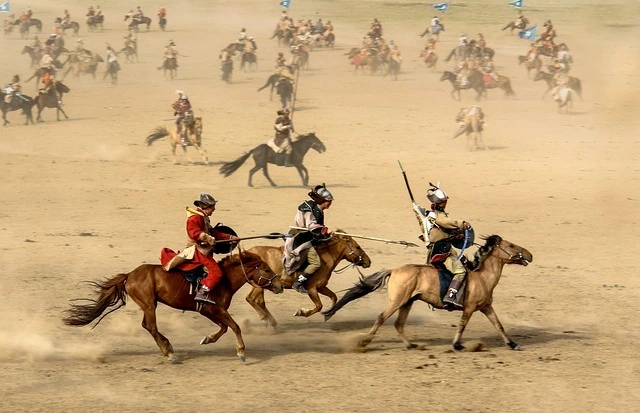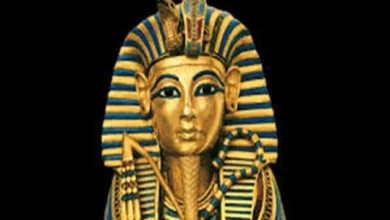These are the most famous protests in history

There are no repercussions for one man’s secret dissatisfaction. His words will, nevertheless, be heard by a large number of followers if he talks clearly and loudly enough.
Consequently, those who do the same will draw even more supporters. The fire is going to start eventually. In a fire like this, unstoppable empires and enduring dynasties vanish.
Anti-Assyrian Protest

Numerous academics believe Assyria was the first empire in history to adopt a modern shape. A true superpower with centralized authority, a regular army, standard taxation, and laws across large areas replaced the network of city-states.
Arguably the strongest empire in the world for several centuries, the New Assyrian Empire ruled the surrounding area.
It’s hardly hyperbole to say that the conquered territories and newly acquired subjects were ruled with an iron hand.
Assyria’s astounding military victories can be attributed to its early adoption of iron weaponry. But nothing endures indefinitely.
A civil war broke out in the empire following the passing of King Ashurbanipal after Babylon rose in rebellion in 626 B.C., and its own ruler, with the backing of a military elite, formed.
This turned into a call to attack an increasingly vulnerable Assyria. As soon as fighting broke out with the kingdom of Midian on the western frontiers, Nineveh, the capital of Assyria, came under siege.
After three months, the city was overrun, pillaged, and destroyed. Ashur was still the empire’s principal fortress, and the last battle was fought here. At that point, the city, over two millennia old, was reduced to ruins.
After retreating to Egypt, the surviving members of the once-mighty army gradually vanished. The empire’s territories were divided by the rulers of Midian and Babylon.
The New Babylonian monarchy came into being, and we are mostly familiar with it because of its emperor, Nebuchadnezzar II. It was through him that the Hanging Gardens of Semiramis were established.
However, the scientific community contests both the nomenclature and its existence. Thus, Assyria’s existence ended. It was the only significant kingdom to survive the Bronze Age debacle.
The Roman Revolution

The Roman Empire is a topic that almost everyone in the world has heard about. With a wealth of heritage, it was the most powerful state in its era. Stories and myths abound about Rome’s early origins.
In 754 BC, Romulus and Remus, whom a she-wolf had reared, founded the Eternal City.
Rome remained a little kingdom for over two centuries, providing sanctuary to criminals, fugitives, and other intrepid travelers. Six more monarchs followed Romulus, with Lucius Tarquinius being the final one.
In 510 BC, the king’s son maligned the honorable and pure Lucretia, who was the prefect of Rome’s wife. The woman took her own life after disclosing what had happened to her husband, father, and friends.
Her body was moved about the city in a cart. As the procession got bigger, it got closer to the palace. This led to a rebellion, culminating in the unpopular tsar’s removal from power a year later.
The deposed monarchy gave way to a republic with a brand-new senate and constitution.
Henceforth, two consuls were chosen annually instead of a single, lifelong king. Collatinus and Brutus were the first.
Legend has it that Brutus assembled all of the republic’s nobility and swore never to let anyone else become
Liu Bang’s Rebellion
In 221 BC, Qin Shi Huangdi established the Qin dynasty, becoming the first person to unite China. Nevertheless, in a few fifteen years, the unity was destroyed.
Another well-known figure emerged from the shadows due to political unrest and the possibility of another civil war. Little is known about Liu Bang’s early years other than the fact that he joined the police force at the age of 40 after growing up in a fishing family and became a well-known politician and speaker.
The beleaguered nation required some time off, but the feudal lords were raising armies once more in an attempt to challenge for the throne.
Liu Bang started uniting all the poor people under his banner and established Chu as an independent state.
The fact that the new monarch came from a peasant family marked him favorably and added to the stream of supporters.
Liu Bang soon led the biggest army. After the Qin dynasty collapsed in 206 B.C., the Chu kingdom became the Han Empire.
The Abbasid Revolution

There was a major issue even though the Umayyad Caliphate ruled over a territory of 11 million square kilometers by the middle of the seventh century.
The people who lived in the Arab empire were mainly non-Arab. Whether they became Muslims or held onto their traditional beliefs, the ruling dynasty saw these subjects as second-class citizens.
The Abbasids exploited the dissatisfaction of the great mass of people. Their lineage back to the Prophet Muhammad accounted for their claim to authority.
The Abbasid uprising is regarded as the greatest planned revolution of its era. Every state institution had been preemptively infiltrated by secret agents. In many parts of the empire, groups of followers were secretly assembled.
By the middle of the eighth century, the Umayyad Caliphate ruled over a territory of 11 million square kilometers, yet there was a significant issue.
The populace of the Arab empire was mainly non-Arab. Regardless of whether these subjects converted to Islam or held onto their traditional beliefs, the ruling dynasty saw them as second-class people.
The Abbasids exploited the great bulk of people’s unhappiness. Their family’s biological links to the Prophet Muhammad justified their claim to authority.
The Abbasid insurrection is regarded as the best-organized uprising of its era. Secret operatives pre-infiltrated all state institutions and concealed groups of adherents assembled throughout the empire.
Upper-class allies liberally financed the movement. The addresses were given by
In order to prevent the collapse of the empire, the Abbasids nearly eradicated their opponents during the course of the following three years. The period of Arab conquests starts at this moment.
Islam expands over the Middle East and even reaches China; the capital is shifted to Baghdad. The eighteenth and twelfth centuries are referred to by historians as the Muslim Renaissance.
The Arab Caliphate was the world’s largest state at this period, as well as its hub of science and culture.
Slavic Protest
In 983, the Slavic tribes that inhabited the region between the Elbe and the Baltic coast produced a considerable amount of instability. Not desiring to join the Germanic monarchy, the Lutichi and Bodrichi were against it.
Christian imposition, which ran counter to Slavic paganism, was the primary cause of the rejection. Hostilities continued for over two decades. A clear-cut victory was not achieved by either side.
Slavs were unable to maintain their hold on the conquered lands for an extended period of time because they lacked a settled polity.
Having to engage in asymmetric warfare, the Germanic country spent all of its money. King Henry II had a political transformation in 1003.
After concluding an alliance with the Lutichs, he made war on the Polish Duke Boleslaw the Brave, his previous ally. As a result, the Eastern Slavs were able to take control of the conquered areas.
One major outcome of the Slavic Revolt was the total cessation of German colonization for the following two centuries.
The migration to the East only picked up again in the seventeenth century, at which point the local Slavic populace was Christianized.




